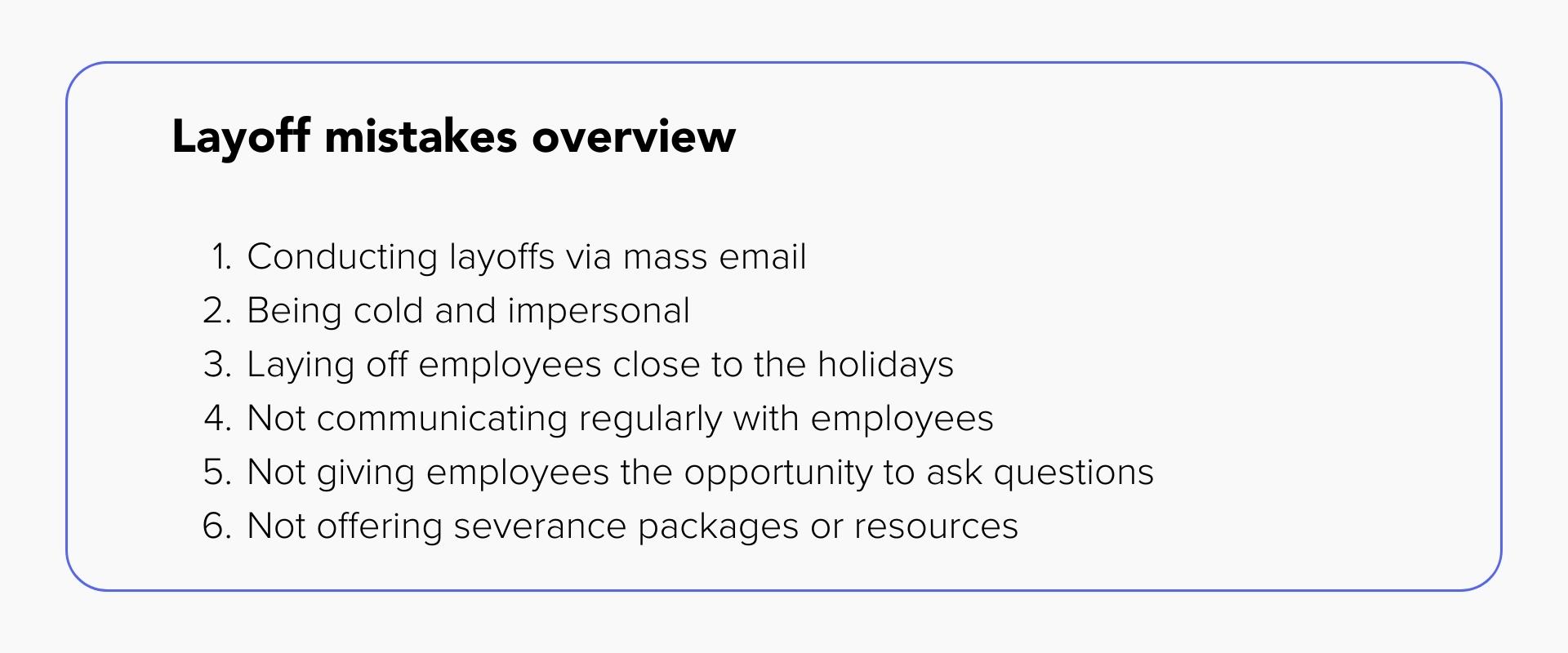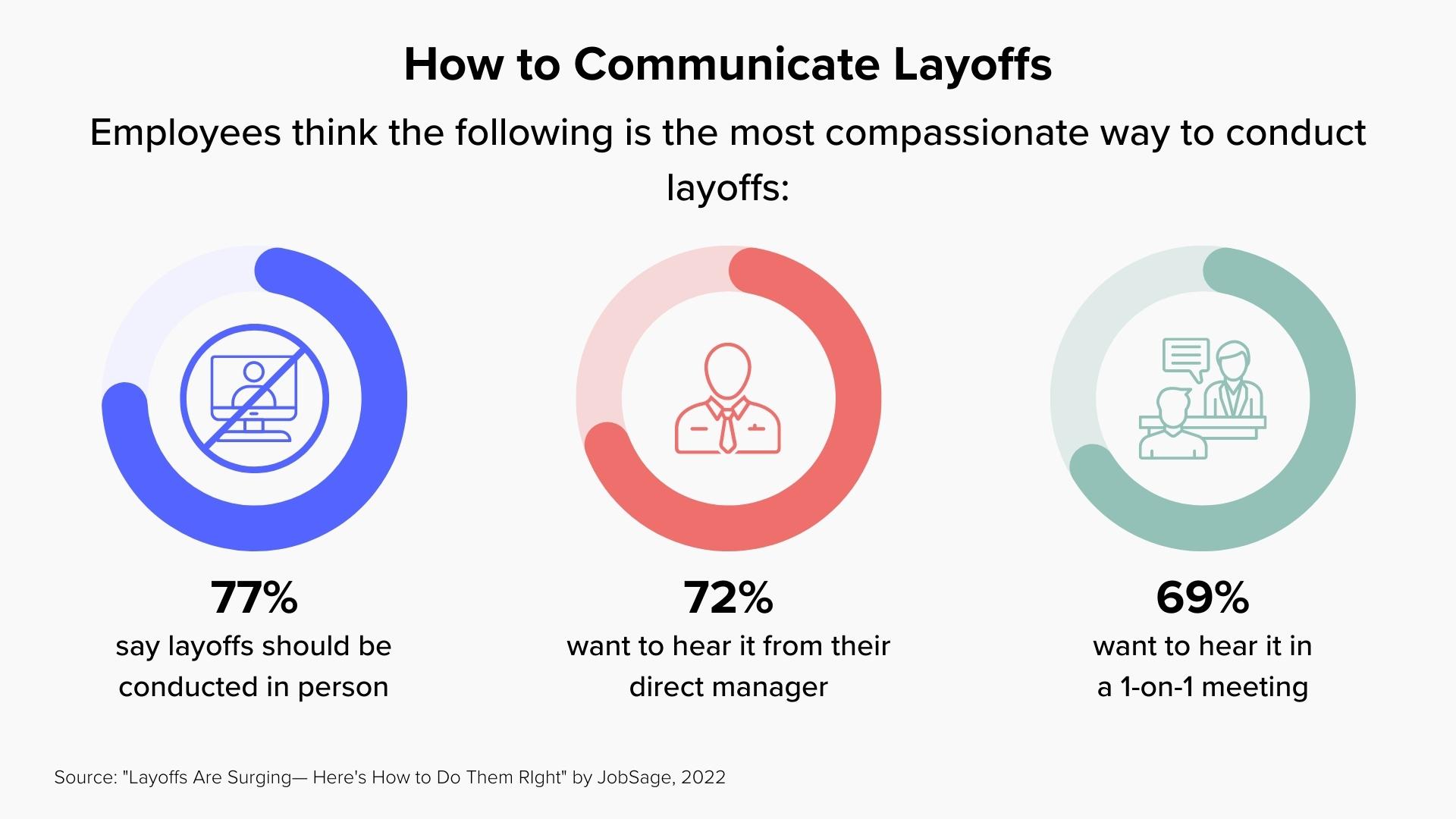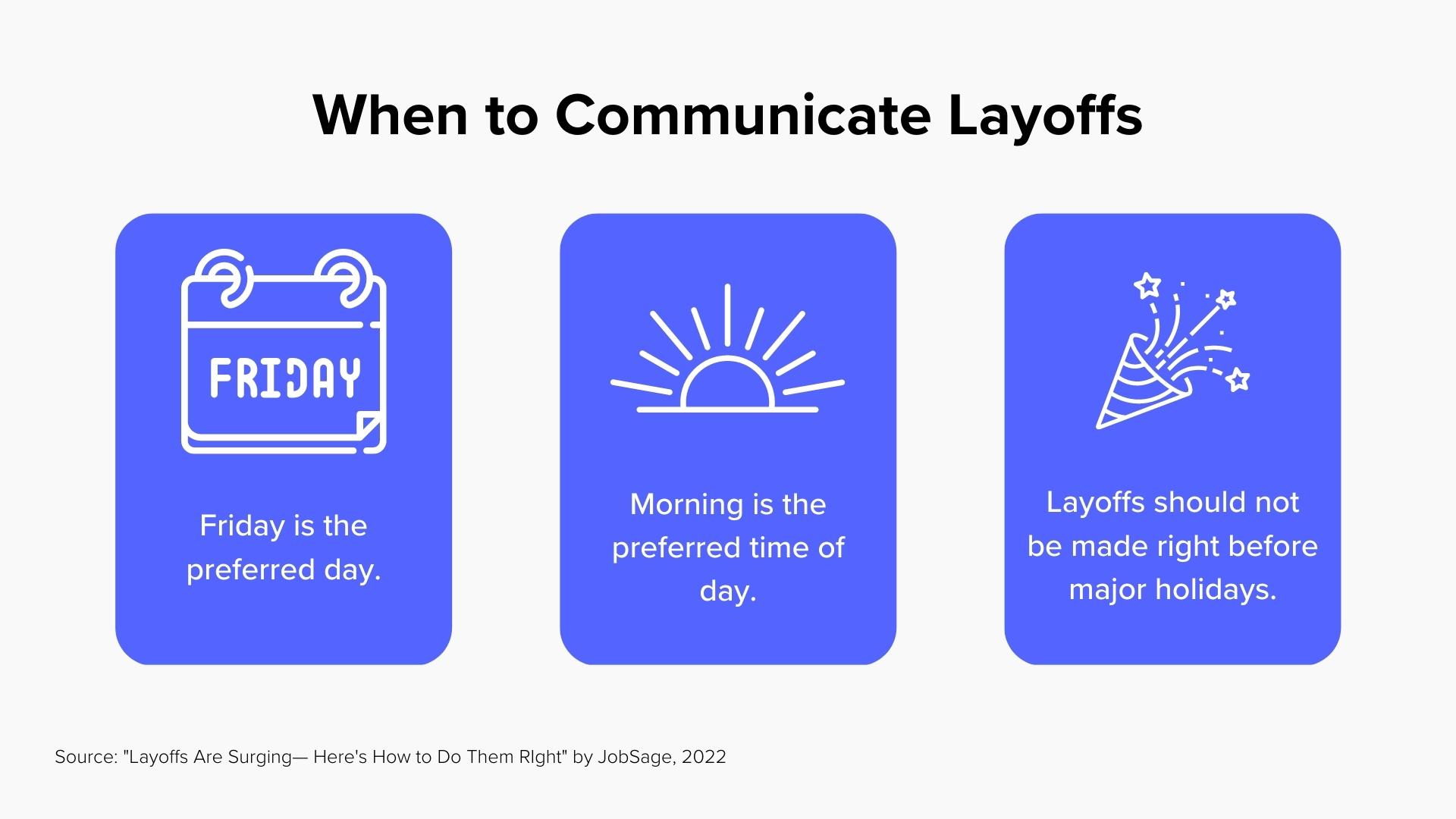As companies across the country continue to grapple with the economic fallout of the COVID-19 pandemic, many are being forced to make difficult decisions about layoffs. Layoffs are never fun, but they are an especially unpleasant experience when a company goes about them the wrong way.
With 65% of Americans who have faced a recent layoff saying that employers could have done a better job with the process, there’s plenty of room for improvement. In this article, we’ll take a look at six common mistakes that company leaders should avoid making when conducting layoffs, as well as some statistics from our study “Layoffs Are Surging – Here’s How To Do Them Right”.
6 layoff mistakes to avoid
While downsizing is never an easy choice, there are some common mistakes that employers can avoid in order to make the process as smooth and humane as possible.

Mistake #1: Conducting layoffs via mass email
As a leader, you know that difficult conversations will arise in the workplace. It is always better to deliver this kind of news face-to-face rather than sending a generic, impersonal mass email. According to a survey we conducted in 2022, over three-fourths of employees say that layoffs should always be communicated in person.
If your company is fully-remote or the employees in question are located elsewhere, it is important to deliver breaking news in a one-on-one or small team setting instead of during a large company-wide meeting. Over 70% of people said that they want to hear the news from their manager, and 69% said they would prefer to hear it in a one-on-one meeting.

Mistake #2: Being cold and impersonal
Browse LinkedIn or news articles about recent layoffs, and it won’t take long before you find stories of bad experiences. Whether it was done in a massive 2-minute Zoom meeting or employees were simply locked out of their company email accounts without warning, there are no shortage of wrong ways to go about layoffs.
In our survey, 35% of respondents said that they did not feel cared for at all during their layoff, which leaves a bad impression on employees past, present, and future— as well as customers. More than six in ten people say that their opinion of employers is affected by how they handle layoffs.
As a company leader, it is so important to handle these difficult situations with compassion, understanding, and respect. Showing respect for the employee during this time acknowledges their hard work and sacrifices during their employment and affirms their dignity in a difficult time. This level of decency should be extended regardless of tenure or job title, as every member of staff has invested in the company’s success in some way or another. By affording each employee the highest level of respect throughout the process, employers can show empathy and create trust.
Mistake #3: Laying off employees close to the holidays
Choosing the right time to conduct layoffs is an important responsibility for company decision makers. Yet, nearly a third of respondents in our survey reported being laid off at an awful time, such as before a holiday. Scheduling layoffs during the holidays can leave employees feeling unsupported and can potentially lead to additional distress in an already difficult situation.

Mistake #4: Not communicating regularly with employees
Communication is key, especially when your company is going through economic hardship. It’s important to communicate with your team regularly so they understand layoffs may be coming, why the layoffs are happening, and how it will affect them.
The overwhelming majority of people— 96%— want to be warned ahead of time about the potential need for layoffs. Despite this, only 13% of people report receiving any kind of warning.
Keeping team members informed can help maintain morale and foster transparency. Managers should openly talk about these topics through open-dialog sessions so employees see that the organization values their opinion and is being proactive in preparing for the situation. Ultimately, regular communication can not only provide reassurance, but also act as a platform for managing any expected issues or questions during this difficult time.
Mistake #5: Not giving employees the opportunity to ask questions
Both non-affected and laid off employees will undoubtedly have questions after the news is broken. It’s important to give employees an opportunity to voice their concerns and answer any questions they may have. Open communication during this time can show respect and care towards the former employee while also providing them with the closure they might need before moving on. It can also maintain a sense of trust in the employer-employee relationship, as employees will feel reassured that management values their contributions, even during these challenging circumstances.
Mistake #6: Not offering severance packages or resources
The best way to help lessen the blow of a layoff is to offer severance packages, outplacement services, and resources to affected employees. Only 27% of employees in our survey reported receiving a severance package when laid off, but 99.5% said that it would have been helpful.

By providing a monetary cushion, career guidance, and connections throughout the process, employers give employees the tools to navigate the next steps in their new job search. Offering resources and services to those who are experiencing this difficult time can go a long way toward helping them establish new career paths.
The bottom line
No one wants to have to lay off employees, but sometimes it’s necessary to keep a business up and running. If you find yourself in this position, it’s important to realize that the people you are laying off are not just money that you’re saving— they are humans with families and responsibilities just like you. Following these steps won’t make laying off employees easy, but it will help make the process more bearable for everyone involved.
